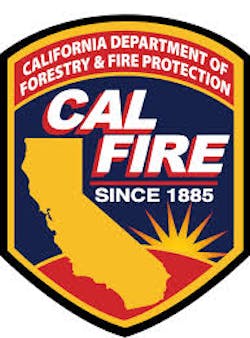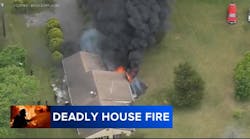Succession planning, changing faces and workforce planning – these are all terms that address a reality facing agencies throughout California and the nation, in both the private and public sectors. According to the Bureau of Labor Statistics, the number of U.S. workers 55 and older doubled from 15 million in 1990 to 30 million by 2010, while their share of the total labor force also increased, from 11.9% to 19.5% during that same period. And the shift in the composition of the labor force from the younger to the older age groups is expected to continue.
As more workers near retirement age, employers must come to grips with the potential loss of vast amounts of institutional knowledge and experience. In the face of such significant losses, how will private and public agencies react and adjust? How will they identify and develop their future leaders? Just as important, how will they position these future leaders to successfully step into key leadership roles?
What’s at stake for the fire service
In the fire service, this problem is no different, and the questions are the same, but the stakes can be significantly higher. Poor judgment, inexperience and indecision can all have disastrous consequences during a fire or other emergency incident, resulting in the damage to or loss of property, injuries or, worse, deaths. And so, as the workforce changes, fire departments across the country grapple with the daunting challenge of trying to replace leadership while maintaining a high level of public service.
Since the late 1990s, the California Department of Forestry and Fire Protection (CAL FIRE) has been exploring and implementing a variety of initiatives to address the changing face within its organization. Specifically, a high number of retirements over the past few years has resulted in significant turnover in key leadership positions. Through training, mentoring, classification and compensation strategies, CAL FIRE has sought ways to identify, prepare and promote its future leaders to ensure that the department can continue to carry out its critical mission to serve and safeguard the people and protect the property and resources of California.
CAL FIRE has responsibility for more than 31 million acres of privately owned wildlands throughout California. With nearly 4,700 full-time fire professionals, foresters and administrative employees, 2,400 seasonal firefighters, 5,600 local government volunteer firefighters, 2,600 Volunteers in Prevention and 4,300 inmates and wards, the department’s jurisdiction extends the length and breadth of the state. In addition to battling more than 5,600 wildfires that burn over 172,000 acres each year, CAL FIRE personnel also respond to structure fires, vehicle accidents, medical emergencies, swiftwater rescues, civil disturbances, search and rescues, hazardous material spills, train wrecks, floods and earthquakes. In addition, the department is responsible for the management and protection of California’s rich and diverse natural resources, which provide valuable timber, watershed, wildlife habitat and recreation resources. With such a broad and critical mission, ensuring strong leadership is paramount.
In 2011, under the guidance of Director Ken Pimlott, CAL FIRE launched a project to revise and rewrite its strategic plan, which had been in place for a number of years without being updated. Amid a challenging period of shrinking budgets and shifting operational needs, the Director recognized the need to revisit the department’s strategic goals and objectives and map out a path forward.
“In the midst of continued changes,” Pimlott notes in his introduction to the 2012 CAL FIRE Strategic Plan, “it is critical that we firmly establish our vision and embrace our core values in order to develop a plan that will ensure our continued progress.”
Looking toward the future
The CAL FIRE Strategic Plan identifies the department’s mission, vision and core values, while establishing primary goals and objectives and providing the roadmap for achieving them. “As a leader in fire prevention and protection, emergency response, and natural resource protection,” Pimlott points out, “we must provide the example to the public, our partners and our employees.”
One key goal of CAL FIRE’s Strategic Plan is to promote a highly motivated and well-trained workforce. CAL FIRE’s executive team recognizes the importance of recruiting and retaining the most qualified, most capable people and it understands the need to empower employees at all levels. Critical among the tasks to carry out this objective has been the development of management and leadership mentoring programs, which culminated in the reestablishment and delivery in March 2013 of Supervision 5, Exceptional Leadership. This class was resurrected to address succession planning at CAL FIRE’s highest levels by identifying potential future leaders within the department and bringing them to Sacramento for a week to expose them to the workings of the department at the executive level.
With an emphasis on succession planning, the class provided a leadership forum focused on effecting change within the state system. Students learned about basic government functions, the decision-making process and CAL FIRE’s roles and responsibilities within these areas. Students also benefitted from the opportunity to interact heavily with executive management over the course of the week and gain exposure to the “bigger picture” of issues and considerations and to experience how Management influences decisions that enhance department success.
Working in groups, students focused on recognizing the need for change within the department or a specific program and then got a first-hand look at how to use internal and external processes required to successfully implement change within the state system.
From identifying an issue to researching and developing an issue paper to delivery of that paper to various levels of management within the department to presenting the issue to legislative members in a mock hearing setting, students worked an idea from conception to ultimate approval or denial. Along the way, they learned valuable, and sometimes brutally honest, lessons about how things really work at the highest levels of state government. They were exposed to real stresses that can often impede progress and were asked to overcome them and deliver a proposal by the end of the week.
“We bear the responsibility of protecting the public and the integrity of our profession,” says Assistant Chief George Morris III, a student in Exceptional Leadership. “This class demonstrates that our executive leadership is determined to ensure a strong future for the department. Public perceptions may change, but our duty does not.”
As proof of the value and effectiveness of the Exceptional Leadership course in its succession planning efforts, the CAL FIRE executive team is using the students to continue to work in groups on issues that arose during the course of the week.
“This training isn’t a one-time deal,” says Chief Deputy Director Janet Barentson. “We want to continue the education of these students by using them to work on projects that are critical to the department’s future. This will allow them to take what they learned during the week in simulated situations and apply it to real-life issues.”
As CAL FIRE grapples with a changing workforce and a loss of corporate knowledge and experience, it continues to work proactively to ensure that it will remain a leader in the fire service and be able to carry out its critical mission for California citizens and resources. Through the issuance and implementation of its Strategic Plan, the Department has mapped out its future, and with the initiation and delivery of Supervision 5, Exceptional Leadership, it has identified some of the people who will likely help it get there.






